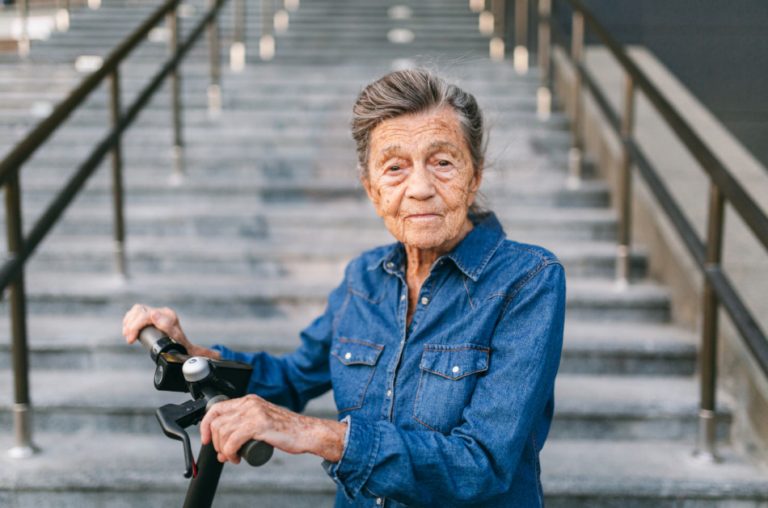We all seek some belonging. Our actions and contributions give us inner peace as nothing else can. This is especially so for older people.
Our worldwide population is rapidly aging, with the most senior age group (80 and up) being the fastest-rising. But unfortunately, they are also the most forgotten group, and they find it more challenging to be considered functioning members of society.
The UN has long sought to maintain and improve the well-being of older people; the recently released UN Decade of Healthy Ageing 2020-2030 identifies four priority areas for action: ageism, age-friendly communities, long-term care, and providing integrated, person-centered care.
The COVID-19 outbreak has spawned additional social challenges, such as an increase in ageism.
News and social media have reinforced negative stereotypes of the “elderly,” depicting them as weak, frail, and unable to contribute to society.
This article will discuss an ancient wisdom-based scale’s research analysis of inner peach development skills.

How your activities and environment establish inner peace
This UN-sponsored study was interested in what the elderly do in their surroundings. Which geographical sites were associated with their daily activities and projects? How do these elements work together to promote well-being?
The purpose of the study was to examine the world of older people through the lens of their activities. The goal was to depict the developmental factors during a stage of old age, comparable to how we investigate adolescent development factors.
We all know that the environment and activities play a significant role in early childhood development. Over the years, researchers have even discovered the environmental traits and the actions most likely to induce healthy child development.
With this latest research on older people, researchers hope to determine similar factors regarding older adults and their later-stage development.
The researchers intended to find a way to persuade society to view older people as individuals with valuable knowledge, experience, and wisdom.
Older people need to be seen as people who are willing to contribute to society instead of just being individuals dealing with loss management and daily frustrations resulting from a deterioration of health and stamina.
Experiment and discoveries
Older people were asked various questions during the research.
According to the results, older people’s final decades can be a period of continuing growth and flourishing. And their ability to be of service, interact, and engage in a meaningful way may contribute to their progressive well-being at an older age.
Here are some elements that are shown to impact the well-being of older people:
- How many and how meaningful are their projects
- The place and context these projects take place
Some environments found to impact older people positively
Restorative
Older people contribute to social coherence in healthy environments by sharing their experience or expert skills to fix or upkeep.
Affinity
Affinity environments are characterized by being supportive of what an older adult likes and is good at.
Flow
Flow environments can be understood as where older people immerse themselves in their work.
The research’s main objective was to find out what environments and activities or types of projects positively affect older people and determine how important and to what degree they could be integrated into society as valuable and meaningful individuals.

A diverse spectrum of personal interests
The findings showed that the elderly have a diverse spectrum of personal interests.
Researchers layered out the projects and initiatives older people engage in on a hierarchical scale that ranges from hedonism to spirituality.
Older adults were over-proportionately engaged in social relationships, spiritual pursuits, and volunteer activities. Nevertheless, they were active and passionate about their interests.
Their efforts included a wide range of intrapersonal and interpersonal endeavors, such as embracing new experiences and gaining new skills.
Younger adults engage more in activities and pursuits that sustain their interest or revive them.
The three discoveries
Discovery 1
The study discovered that the elderly had more projects than previously reported. The participants said an average of 6.77 projects compared to 2.8 and 2.4 in adults aged 70 and older. Projects are personal passions or things they focus their time and dedication on.
Discovery 2
Quantitative data showed that the participants were engaged in projects that resulted in high joy — meaningful projects created hope and a high potential of just emerging one’s self.
The study showed an increasing need to facilitate more space and create a more inclusive social environment for older people to take on tasks and projects that appeal to them.
Discovery 3
The environment someone lives in has a dynamic and constitutive impact on individual projects but has received little attention.
Conclusion
Researchers determined that a theory is needed that will be able to map the personal projects and places that flourish in terms of different social contexts and the specific interaction of people there.
So far, only Duff’s (2012) “enabling places” theory offers a theoretical framework.
The core findings challenged the negative stereotypes associated with old age.
They called for an expanded theory of “project places.” They suggested that Duff’s “enabling resource” framework might be one way to advance this theory.
Follow us on Twitter, Facebook, or Pinterest

